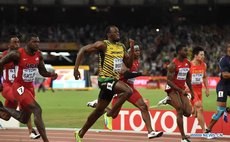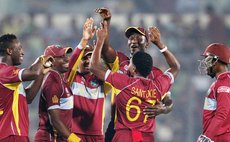The Bricks and Mortar of a Good Cricket Team - Part 4
The Art of the Bowler
Having dwelt somewhat on batting in the last three articles, we need to turn to the business of bowling in the matter of arriving at a good quality cricket team. It is commonly said catches win matches, but it is the bowler who produces the catches, and therefore there is a reliance on him to get opposing sides out. Of course, there is more glamour associated with batting as against the laboring aspect associated with bowling.
There are three basic types of bowlers in relation to speed – the fast bowler, the medium pace bowler and the slow bowler. Not all individuals are physically equipped to bowl fast. This is hard work and the best advice to the young paceman is to equip himself via the use of appropriate strength building exercises with the aid of someone who is skilled in this regard. Strength must be increased but flexibility must not be marginalised.
If a youngster seeks to improve as a fast bowler he should very early embark on a quest for serious accuracy in both length and direction. A good team is blessed with at least two such exponents of controlled pace. The imperative is linked to a high caliber projection of deliveries accurately pitched on or close to the line of the off –stump.
To sustain the level of accuracy there is benefit to be attained from adopting the right grip on the ball. Then, perhaps not adequately realized is the usefulness of a consistently well reproduced fluid runup to the wicket. It may be exhausting in working extensively on the runup. However, it is effort very well spent. Better to acquire a decently smooth runup of ten to twelve yards before branching out to the longer and more cumulatively explosive launching pad of the allout speed merchant.
One thing that should not be ignored at the very outset is the need for the young paceman to strictly adhere to the formulation of a clean bowling action. Anything remotely resembling suspicion as to the purity of the bowling action must be eliminated at all cost. Having acquired a good bowling action, further progress arises from high quality effort in sustained practices – possibly a half hour to three –quarters of an hour at a time with the new ball in hand.
In no way should we underestimate the usefulness of having a knowledgeable person to keep an eye on the young bowler in the nets to avoid his acquiring bad habits like falling into the business of foot faulting (no balls) or deteriorating into wild loss of direction or accuracy in control of length. If you pitch short eratically there has to be a reason for this. The grip on the ball could be too tight. By the same token, consistent full tosses could arise from too slack a grip or impairment of body balance during delivery. Again, that's where the observations of a skilled onlooker can be invaluable.
Good luck to the team with two upper class pacers exhibiting good control. That's not all though ! What of the matter of cultivating a well injected and deceptively slower ball? What of the ace weapon of a good yorker? What of the bouncer which lethally follows the batsman rather than allowing the batsman to follow it? All these are gems the self respecting pacer will want to include in his armoury. The only way is to work intelligently and continually.
If the bowler sees himself as the high priest of pace personified, what of his acolytes – the wicket keeper and the slip cordon? Every quality team has to rely on the intimidatory effect of its three slips and two gullies, yet, it can be such a waste to see such a field placing in evidence without the bowler inserting his deliveries with due precision.
Who sets the field? Could be the bowler as much as its captain. Generally, though, it is the captain. His requirement is for the bowler to bowl well to the field placement adopted for the immediate enterprise. Our great sympathy is for the captain who is reduced to wondering about setting a field for bad bowling. As a bowler, you have the field set positively for good bowling. Then, please, comply by bowling to your field for the five or six overs you are apportioned in a spell.
Valuing of his physical welfare should automatically induce the fast bowler to take good care of himself by warming up thoroughly before practicing and before the start of matchplay and after intervals etc. very much better to avoid risk of injury than deal with the wasteful loss of time to work your way through rehabilitation and related fitness.
They say bowling with the new ball is a thrill but bowling with the old ball is a skill ! All pacers should embrace this skill and its attendant display of character. There are rewards here. Many batsmen who would generally be intimidated by the new ball, refusing to accept the bait to swish at swinging deliveries, will feel a sense of false liberation and fall into recklessness in going at the old ball. Call it a bonus arising from a fluctuation of temperament on the part of the batsmen. In any case, it is part of the task of the pace bowler to clean up the middle and tail of the innings.
The fast bowlers life is indeed a strenuous one. But who wants to work even harder by bowling into the wind? Take it or leave it, somebody has to accept the end where the wind may be considered an obstruction. Let that someone be you. The art of bowling at the more difficult end could pay dividends for you, providing you master it.
Any really good team will boast pacemen whose pride is to stand up to the job of meeting the challenges that are a consistent fixture in the world of the fast bowlers. Another challenge presents itself in the bowlers ability to quickly detect the specific nature of the batting surface he encounters and accordingly adapting the slant of his approaches leading to due success. Next time we delve into the mysteries of spin bowling.




